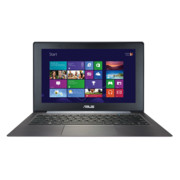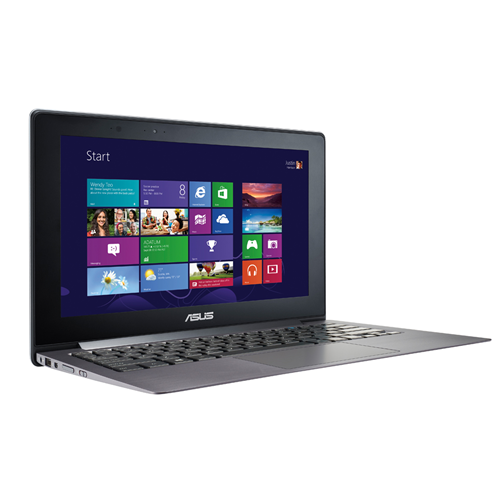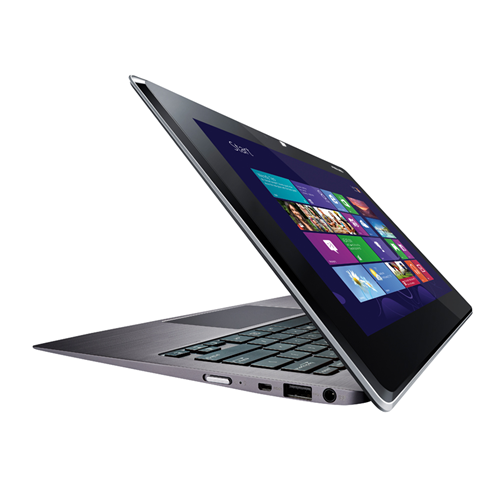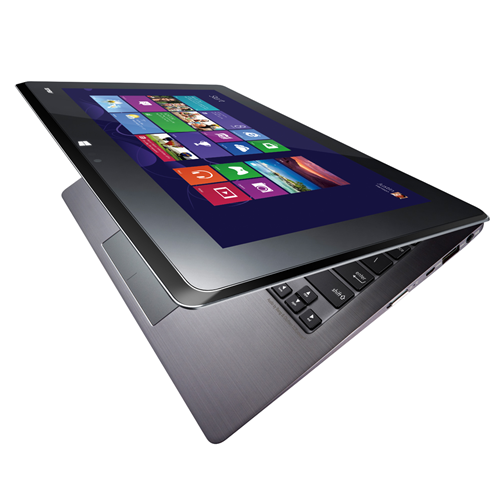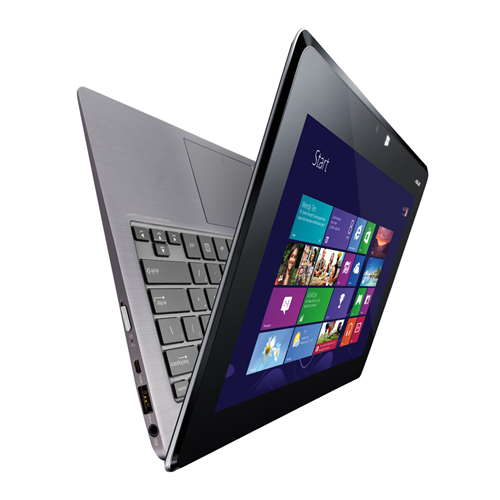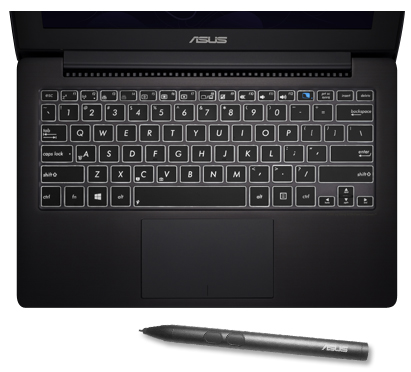Asus Taichi 21-CW002H
Specifiche tecniche
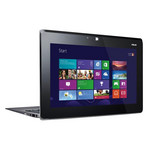
Price comparison
Media dei 3 punteggi (dalle 6 recensioni)
recensioni per Asus Taichi 21-CW002H
Sorgente: PC Authority
 EN→IT Archive.org version
EN→IT Archive.org versionMany manufacturers are struggling to find the most natural meeting point between the tablet and the laptop, and Asus’ own Windows 8 range provides yet more evidence of this. With its VivoBooks marrying touchscreens to standard laptops, the forthcoming VivoTab range mimicking the separate tablet and keyboard dock concept of the Android-powered Transformer Pad, and the Taichi 21 ploughing its own dual-screened furrow, it seems even Asus isn’t confident enough to put all of its eggs in one basket. Give it a few years and a refined, lighter chassis married with more power-efficient CPUs and improved battery life could see this dual-screened form factor present a compelling hybrid. At present, though, Asus’ Taichi 21 feels like a bold, innovative concept that’s just a little too far ahead of its time.
Singola recensione, disponibile online, Corto, Data: 02/19/2013
Valutazione: Punteggio totale: 67%
Sorgente: Ultrabook News
 EN→IT Archive.org version
EN→IT Archive.org versionASUS deserves applause for trying something new and doing it as well as is possible given the current technology. It’s a flagship product that’s brought ASUS a lot of well- deserved attention but we don’t think it’s going to sell that well. It’s simply ahead of its time. Ivy Bridge is not a consumer tablet-capable processor and sandwiching two 1080p screens comes with big size and battery life trade-offs. The Taichi 21 needs to be 20% lighter with 50% better battery life. Interestingly that could be only one generation away. Haswell could make products like this into highly dynamic and usable devices that span consumer and business use.
Singola recensione, disponibile online, Lungo, Data: 02/11/2013
Sorgente: Engadget
 EN→IT Archive.org version
EN→IT Archive.org versionAround the time I wrote this review, I was also working on Engadget's first-ever laptop buyer's guide. I was sure the TAICHI would be a shoo-in for the convertible section, what with its innovative design and sterling spec sheet. Unfortunately, as inventive as this is as a concept, the finished product isn't quite what we all thought it would be.
Singola recensione, disponibile online, Lungo, Data: 02/06/2013
Sorgente: Good Gear Guide
 EN→IT Archive.org version
EN→IT Archive.org versionThe ASUS Taichi 21 is a hybrid Ultrabook that ships with two Full HD screens. Open the lid to use it as a laptop, close the lid to use it as a tablet. It's easy to use and it provides a very good tablet experience. It's not perfect though: we think it needs some tweaks to the hardware and software. But overall, it's a unit worth considering if you're after a Windows 8 hybrid unit.
Singola recensione, disponibile online, Medio, Data: 11/19/2012
Valutazione: Punteggio totale: 75%
Sorgente: Chip.de
 DE→IT Archive.org version
DE→IT Archive.org versionSingola recensione, disponibile online, Medio, Data: 02/05/2013
Valutazione: Punteggio totale: 78% prezzo: 63% prestazioni: 75% caratteristiche: 66% schermo: 89% mobilità: 71% ergonomia: 88%
Sorgente: Notebookjournal
 DE→IT Archive.org version
DE→IT Archive.org versionSingola recensione, disponibile online, Lungo, Data: 01/18/2013
Valutazione: prestazioni: 70% caratteristiche: 30% schermo: 70% mobilità: 40% qualità di lavorazione: 70% ergonomia: 20%
Commenti
Intel HD Graphics 4000: Processore grafico high end tra i modelli Ivy Bridge. Offre una differente velocità clock nei diversi modelli di CPU (da ULV a desktop quad core) e di conseguenza con prestazioni variabili.
La maggior parte dei giochi attuali può essere giocata in modo fluido. Ma preparatevi ad una riduzione delle presentazioni grafiche considerando le impostazioni di dettaglio basse e la risoluzione limitata. Tuttavia, queste schede forniscono ancora abbastanza potenza per le applicazioni da ufficio e la proiezioni di video (ma non per i video HD).
>> Ulteriori informazioni le potete trovare nel nostroConfronto delle schede grafiche e nella nostra Lista dei Benchmark.
3317U: CPU ULV Ivy-Bridge-based del secondo quadrimestre 2012. Offre un core clock di 1.7 - 2.6 GHz ed una HD 4000 GPU (350 - 1050 MHz). Il TDP è di 17 W.
>>Ulteriori informazioni le potete trovare nel nostroConfronto dei processori per portatili.




